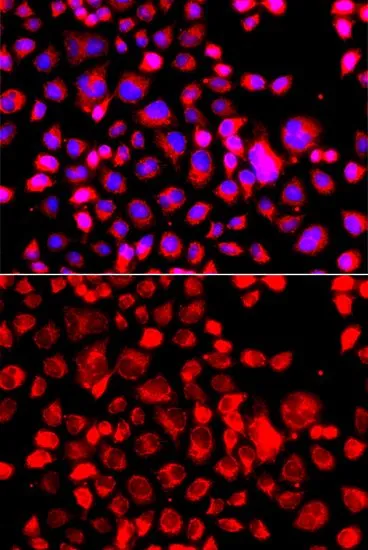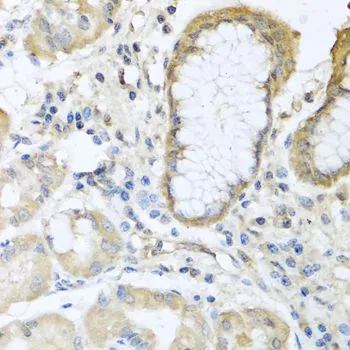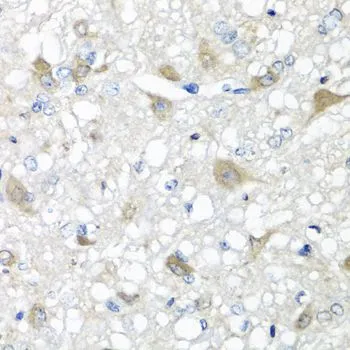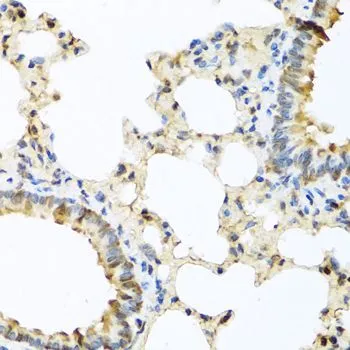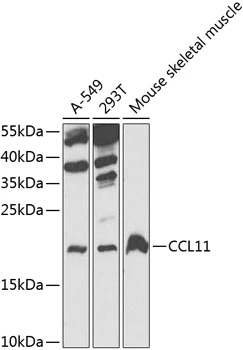
WB analysis of various sample lysates using GTX64437 Eotaxin antibody. Dilution : 1:1000 Loading : 25microg per lane
Eotaxin antibody
GTX64437
ApplicationsImmunoFluorescence, Western Blot, ImmunoCytoChemistry, ImmunoHistoChemistry, ImmunoHistoChemistry Paraffin
Product group Antibodies
ReactivityHuman, Mouse, Rat
TargetCCL11
Overview
- SupplierGeneTex
- Product NameEotaxin antibody
- Delivery Days Customer9
- Application Supplier NoteWB: 1:500 - 1:2000. ICC/IF: 1:50 - 1:100. IHC-P: 1:50 - 1:100. *Optimal dilutions/concentrations should be determined by the researcher.Not tested in other applications.
- ApplicationsImmunoFluorescence, Western Blot, ImmunoCytoChemistry, ImmunoHistoChemistry, ImmunoHistoChemistry Paraffin
- CertificationResearch Use Only
- ClonalityPolyclonal
- ConjugateUnconjugated
- Gene ID6356
- Target nameCCL11
- Target descriptionC-C motif chemokine ligand 11
- Target synonymschemokine (C-C motif) ligand 11; eosinophil chemotactic protein; eotaxin; eotaxin-1; SCYA11; small inducible cytokine subfamily A (Cys-Cys), member 11 (eotaxin)
- HostRabbit
- IsotypeIgG
- Protein IDP51671
- Protein NameEotaxin
- Scientific DescriptionThis antimicrobial gene is one of several chemokine genes clustered on the q-arm of chromosome 17. Chemokines form a superfamily of secreted proteins involved in immunoregulatory and inflammatory processes. The superfamily is divided into four subfamilies based on the arrangement of the N-terminal cysteine residues of the mature peptide. This chemokine, a member of the CC subfamily, displays chemotactic activity for eosinophils, but not mononuclear cells or neutrophils. This eosinophil-specific chemokine is thought to be involved in eosinophilic inflammatory diseases such as atopic dermatitis, allergic rhinitis, asthma and parasitic infections. [provided by RefSeq, Sep 2014]
- ReactivityHuman, Mouse, Rat
- Storage Instruction-20°C or -80°C,2°C to 8°C
- UNSPSC12352203

